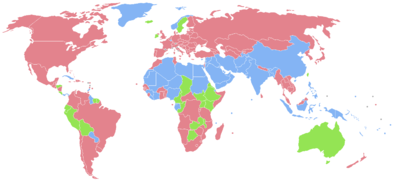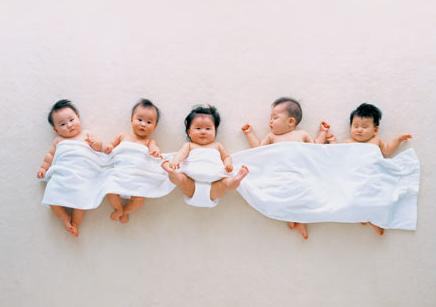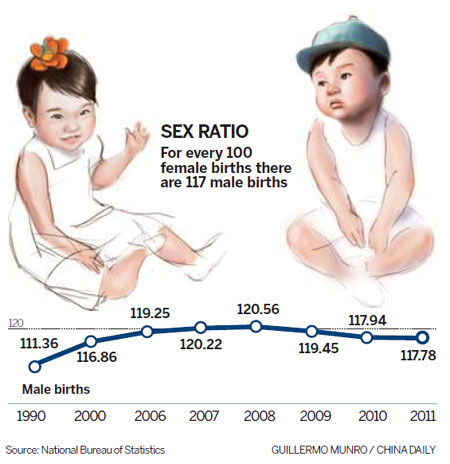Chinas one child policy to attempt to control population growth, restrict parents to care for one child only. Initiated in 1979, this policy aimed at alleviating social, economic, and environmental problems in China. It urged that married urban couples can have one child, with the exemptions for Special Administrative Regions of Hong Kong and Macau,Tibet and rural couples, ethnic minorities, and parents without any siblings themselves. According to a survey of the Pew Research Center, over 76% of the Chinese population supports the policy. However, it is still quite controversial inside and outside China, considering the fact that it might cause negative economic and social effects, and other side effects such as gender imbalance.
Like many other Asian countries, China has a long tradition of son preference. In rural areas, a son is generally preferred since he is more helpful in farm work and is seen as continuing the family line. The sex ratio at birth in China was 108:100 in 1981, and it had risen to 111:100 in 1990. In 2000, it reached 117:100. In 2000, male/female sex ratio from the 2nd to 5th child ranged from 148 : 100 to 160 : 100. According to William Saletan , the high figures for second birth could reach to 190 in Anhui and 192 in Jiangsu. For third births, the sex ratio rose to over 200 in four provinces. The State Population and Family Planning Commission warned that gender imbalances could lead to social instability. China's men are facing a shortage of wives, with a predicted 30 million more men of marriageable age than women by 2020,and what is worse,in rural areas – where the imbalance is at its greatest – will be further affected because women are "marrying out" into cities.
 A 2010 survey by the government-backed All China Women's Federation showed there were 180 million single men and women in the nation of more than 1.3 billion people.
There is even a new phrase "Sheng Nu", or "Unwanted Girls", for well-educated and financially independent women who remain single.
The term, which is unique to China and which only applies to women, appears in the nation's official dictionary and refers to "all single woman above the age of 27".
A 2010 survey by the government-backed All China Women's Federation showed there were 180 million single men and women in the nation of more than 1.3 billion people.
There is even a new phrase "Sheng Nu", or "Unwanted Girls", for well-educated and financially independent women who remain single.
The term, which is unique to China and which only applies to women, appears in the nation's official dictionary and refers to "all single woman above the age of 27".

Revenues from China's online dating market are forecast to top two billion yuan ($315 million) in 2014 as work-stressed Chinese struggle to find partners. Tens of millions of single Chinese people now use match-making websites to find partners or meet new friends, said the report from Analysis International, which forecasts the market will hit 2.02 billion yuan by 2014 double its value last year.

Countries with more females than males.
Countries with the same number of males and females.[clarification needed]
Countries with more males than females.
No data
|
In a scientific paper published in 2008, James states that conventional assumptions have been: there are equal numbers of X and Y chromosomes in mammalian sperms X and Y stand equal chance of achieving conception therefore equal number of male and female zygotes are formed, and that therefore any variation of sex ratio at birth is due to sex selection between conception and birth. James cautions that available scientific evidence stands against the above assumptions and conclusions. He reports that there is an excess of males at birth in almost all human populations, and the natural sex ratio at birth is usually between 1.02 to 1.08. However the ratio may deviate significantly from this range for natural reasons.
Wang Xia, head of the National Population and Family Planning Commission (NPFPC), said authorities will crack down further on illegal prenatal gender tests and selective abortions, which are believed to be the primary causes of the gender imbalance.
The authorities will also intensify obstetric monitoring of mothers-to-be and the real-name registration of newborn babies, the official said. Authorities have investigated 15,000 cases and punished 13,000 people for violating family planning laws since the launch of a special campaign by six government departments in 2011, Wang said.
The government aims to bring China's gender ratio below 115 newborn males for every 100 females by 2015. The target will not be easy to reach, as the majority of China's provinces have a much higher ratio, Wang said. Thanks to government measures including the recent crackdown, the ratio has fallen each year since 2009. The gender ratio stood at 117.78 in 2011. China's gender imbalance has caused a series of social problems including sex crimes, trafficking in women, and difficulty finding a spouse for many men, Wang said.
In a recent paper, we look at crime rates, which nearly doubled in the last two decades, and argue that male-biased sex ratios have contributed to this rise. Using annual province-level data for the period 1988-2004, we find that a 1 percent increase in the sex ratio raised violent and property crime rates by some 3.7 percent, suggesting that the sex imbalance may account for up to one-sixth of the overall rise in crime. The finding is robust to a wide range of sensitivity tests. We also show that sex ratios have had opposite effects on men and women’s marriage market outcomes in the expected direction and a heterogeneous effect on male labor market outcomes.
Clearly chinas control to limit the countries population has not worked, the imbalance of more males then female has led to an increase in crime rates and has cascaded into a social fallout of dating agencies and crime involving gender. The governments attempt to reduce the ratio maybe too little too late for the present generation of singles. Meanwhile there are fewer fertility rates, looking at the preliminary results from chinas census reveled that a population that is aging, and growing more slowly with a widening gap between male and female births.







No comments:
Post a Comment